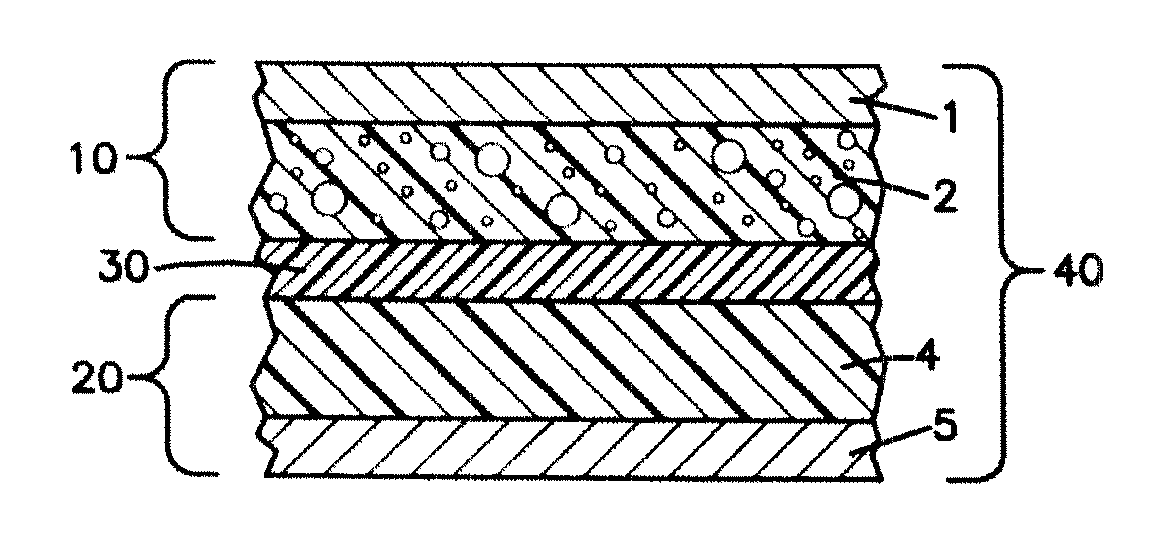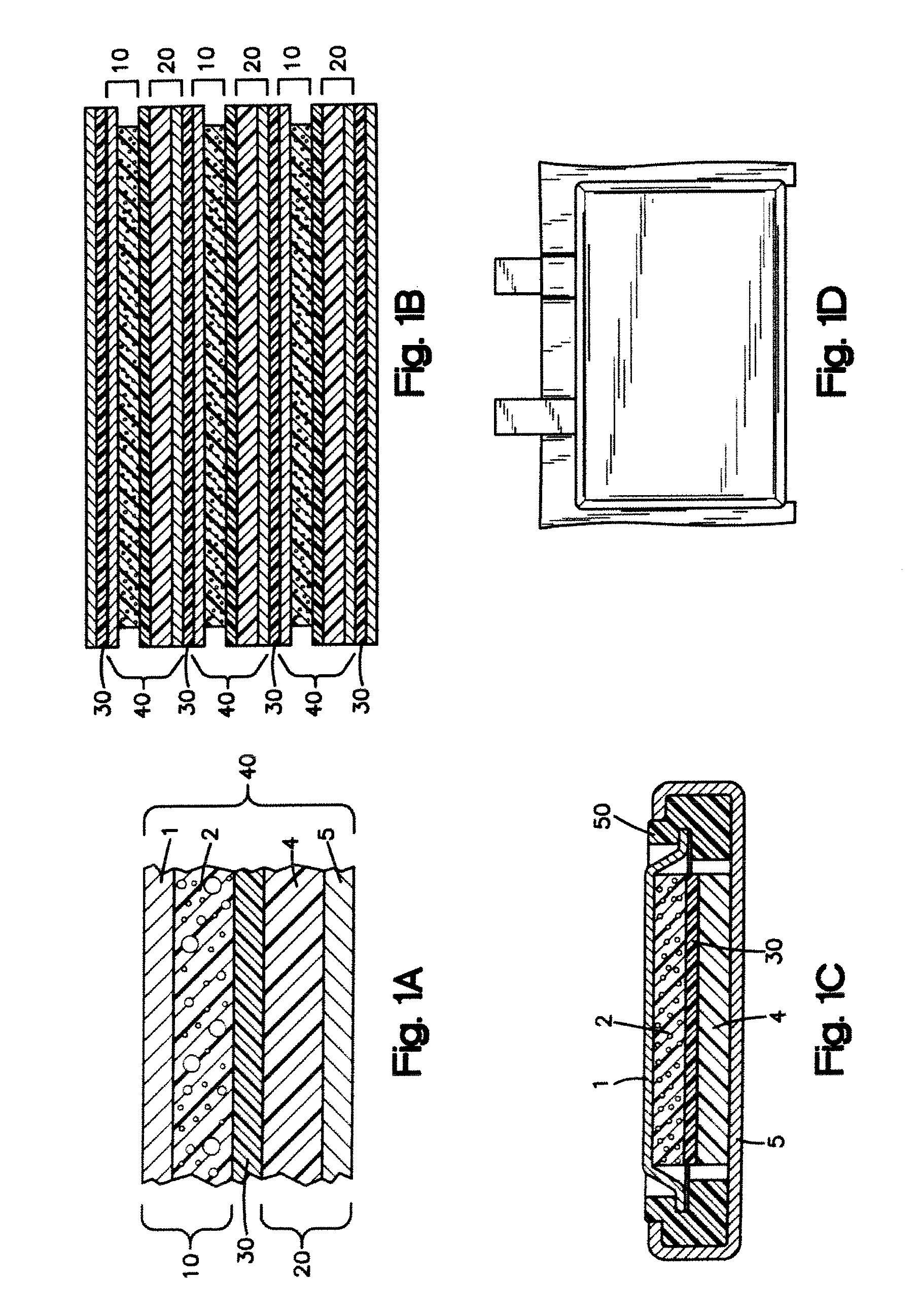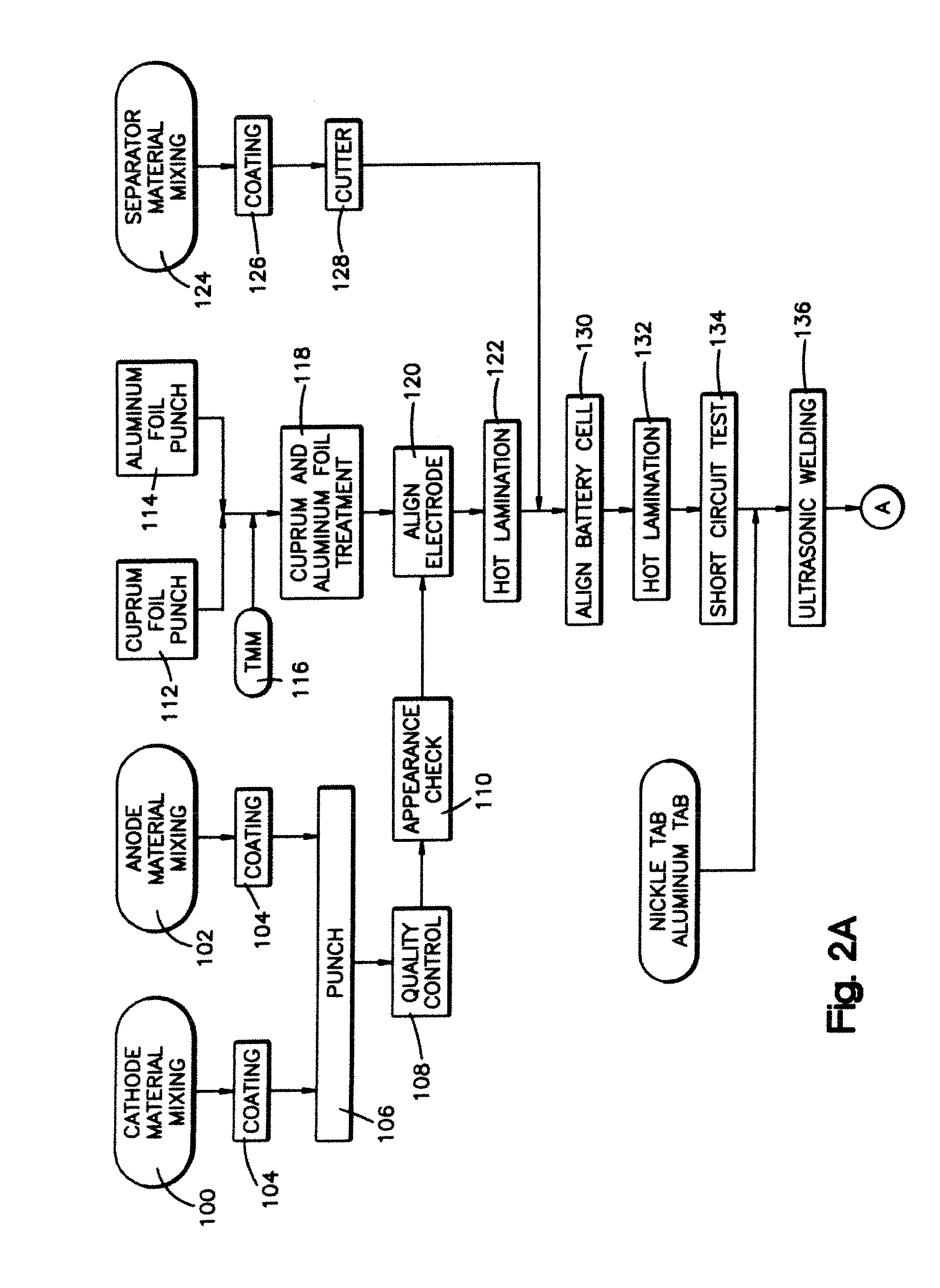Nano-lithium-ion batteries and methos for manufacturing nano-lithium-ion batteries
a nano-lithium-ion battery and nano-lithium-ion technology, applied in the direction of cell components, final product manufacturing, sustainable manufacturing/processing, etc., can solve the problems of safety concerns and undesirable length of time needed to charge and discharge the battery, and the available lithium-ion battery technology,
- Summary
- Abstract
- Description
- Claims
- Application Information
AI Technical Summary
Problems solved by technology
Method used
Image
Examples
example 2
[0061] The cathode material is preferably made by mixing 70 wt % lithium cobalt oxide (LiCoO2), 5 wt % of a conductive carbon, 15 wt % polyvinylidene fluoride (PVDF), 3 wt % polyhexafluoropropylene (PHFP), and 7 wt % dibutyl phthalate (DBP), with acetone. The anode material is preferably made by mixing 75 wt % lithium titanium oxide nanoparticles (Li4Ti5O12), 5 wt % of a conductive carbon, 10 wt % polyvinylidene fluoride (PVDF), 1 wt % polyhexafluoropropylene (PHFP), and 9 wt % dibutyl phthalate (DBP), with acetone. The separator is preferably made by mixing 25 wt % polyvinylidene fluoride (PVDF), 7 wt % polyhexafluoropropylene (PHFP), 5 wt % nano gas status silicon dioxide, and 55 wt % dibutyl phthalate (DBP), with acetone. The finished battery product is preferably made according to the steps described in Example 1.
example 3
[0062] The cathode material is preferably made by mixing 80 wt % lithium cobalt oxide (LiCoO2), 2 wt % conductive carbon, 10 wt % polyvinylidene fluoride (PVDF), 2 wt % polyhexafluoropropylene (PHFP), and 6 wt % dibut,yl phthalate (DBP), with acetone added as an organic solvent. The anode material is preferably made by mixing 85 wt % nano lithium titanium oxide (Li4Ti5O12), 2 wt % conductive carbon, 5 wt% polyvinylidene fluoride (PVDF), 1 wt % polyhexafluoropropylene (PHFP), 7 wt % dibutyl phthalate (DBP), with acetone added as an organic solvent. The separator is preferably made by mixing 50 wt % polyvinylidene fluoride (PVDF), 8 wt % polyhexafluoropropylene (PHFP), 5 wt % nano gas status silicon dioxide, 30 wt % dibutyl phthalate (DBP), with acetone added as an organic solvent. The treatment material slurry for the cuprum and aluminum foils is preferably made by mixing 90 wt % of a macromolecule glue that can be melted by heating, 5 wt % isopropylalcohol, and 5 wt % of a conductiv...
PUM
| Property | Measurement | Unit |
|---|---|---|
| Percent by mass | aaaaa | aaaaa |
| Percent by mass | aaaaa | aaaaa |
| Percent by mass | aaaaa | aaaaa |
Abstract
Description
Claims
Application Information
 Login to View More
Login to View More - R&D
- Intellectual Property
- Life Sciences
- Materials
- Tech Scout
- Unparalleled Data Quality
- Higher Quality Content
- 60% Fewer Hallucinations
Browse by: Latest US Patents, China's latest patents, Technical Efficacy Thesaurus, Application Domain, Technology Topic, Popular Technical Reports.
© 2025 PatSnap. All rights reserved.Legal|Privacy policy|Modern Slavery Act Transparency Statement|Sitemap|About US| Contact US: help@patsnap.com



